NOSE SURGERY
Septoplasty
Septoplasty helps to straighten your nose by reshaping the wall between your nasal passages. If you have a crooked nose due to a deviated septum, your doctor will likely recommend septoplasty.
In addition to straightening your nose, septoplasty can also relieve nasal airway blockage caused by a deviated septum.
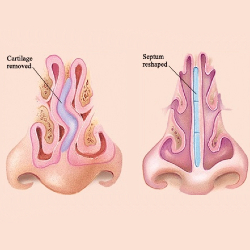
Septorhinoplasty
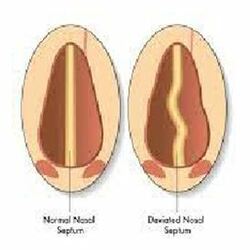
A Septorhinoplasty also known in the non-medical terms as (“nose job”) is a surgical procedure that involves operating on the bones and cartilage that give your nose its shape and structure and making your septum straight.
It has a two-fold objective to improve the appearance of your nose (Rhinoplasty) and to improve how you breathe through your nose (Septoplasty).
The major advantages of Septorhinoplasty are enlisted below
A) Beauty
- Restore facial symmetry.
- Make one look better.
B) Health
- Improve Breathing
- Fix Broken Nose
- Sinus Problems
- Snoring
FESS for Nasal polyposis
The standard procedure to remove nasal polyps is Functional Endoscopic Sinus Surgery (FESS). The surgeon will insert a small tube with a tiny camera into the nostrils and guide it into the sinus cavities and the polyps will be removed, for this procedure Dr.Yashaswi is an expert in FESS surgery in Bangalore
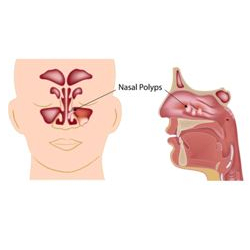
Acute & Cronic sinusitis
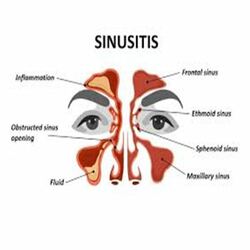
When fluid builds up in the air-filled pockets in the face it is referred to as Sinus infections. This fluid build-up allows germs to grow. Viruses cause most sinus infections, but bacteria can also cause some sinus infections.There are two main types of sinusitis is Acute and Chronic.
Acute sinusitis is inflammation that lasts for less than 4 weeks, subacute sinusitis lasts from 4 to 12 weeks, while chronic sinusitis lasts for more than 12 weeks.
Common signs and symptoms of chronic sinusitis include:
- Nasal inflammation.
- Thick, discoloured discharge from the nose (runny nose)
- Drainage down the back of the throat (postnasal drainage)
- Blocked or stuffy (congested) nose causing difficulty breathing through your nose.
- Bad breath.
- Loss of smell or taste.
Some people are more prone to Sinusitis
- People who have allergies.
- People who have structural problems with their noses (like a deviated septum) or polyps, which are growths that can hang inside noses or sinus cavities.
- People who spend a great deal of time in places where infections happen, like preschools or day cares.
Orbital decompression mucormycosis
The onset of sinus mucormycosis may be associated with nonspecific symptoms such as nasal congestion, postnasal drip, dark blood-tinged or purulent rhinorrhea, sinus tenderness, headache, fever, and malaise. Because the condition may lead to angioinvasion and tissue infarction, infection of the ethmoid sinus may penetrate through bone and soft tissue and cause an eschar to form over the infected area. A black necrotic eschar on the nasal turbinates or hard palate is characteristic of maxillary sinus involvement.
As the infection progresses, late symptoms may include facial or periorbital swelling or numbness, blurred vision, chemosis, proptosis, diplopia, ophthalmoplegia, corneal anesthesia, and loss of vision, which are indicative of invasion of the orbital nerves and vessels. The occurrence of mental status changes, hemiparesis, or seizures suggests intracranial invasion. The time from onset of initial symptoms to late symptoms and signs that are diagnostic of the disease may be as short as one day.
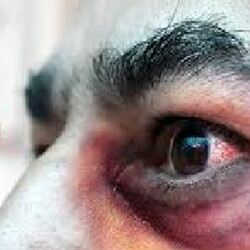
Patients typically elect to undergo this procedure when the symptoms of exophthalmos become severe. This stage of the disease may include:
- Chronic eye pain or headaches
- Chronic eye irritation causing scar tissue over the cornea (keratitis)
- Optic neuropathy and loss of vision
The primary goal of an orbital decompression surgery is to create more space in the orbit (bones around the eye) to allow the eye to return to a more normal position.
Pituitary Adenoma
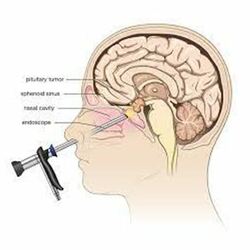
A pituitary adenoma a small growth or tumour on the pituitary gland. It is benign (noncancerous) Unlike cancer, it doesn’t spread to other parts of your body. But as pituitary adenomas grow, they can put pressure on nearby structures and cause symptoms like
- Vision problems
- Weight gain
- Easy bleeding/bruising
- Change in bone structure, especially in the face and hands
- Menstrual irregularities
- Lactation
- Erectile dysfunction
- Heat intolerance
What is the pituitary gland?
Your pituitary is a small gland about the size of a pea that’s joined to your hypothalamus (the base of your brain) right behind your nose. It has two lobes: the anterior (front) lobe and the posterior (back) lobe. Each lobe releases different hormones. Hormones are chemicals that coordinate different functions in your body by carrying messages through your blood to your organs, muscles, and other tissues.
Concha Bullosa
Conchae are structures made of bone inside of your nose. They help control the airflow into your nose, besides cleaning and warming air that is inhaled so that it’s ready for respiration.
Concha bullosa happens when one of the conchae, or turbinates, inside your nose becomes filled with a pocket of air. This is also known as pneumatization of the turbinate.
There are three pairs of conchae in your nose on either side of the septum. Your septum is the structure that divides your nose in half.
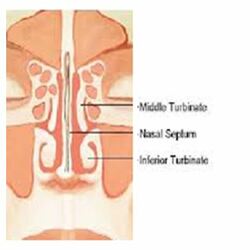
These conchae include:
- The superior turbinates, which are the highest conchae in your nose, near your brain. These protect the olfactory bulb, the part of your brain that helps you smell.
- The middle turbinates, which sit between the superior and inferior conchae. They help keep inhaled air from going directly into your sinuses.
- The inferior turbinates, which are the lowest conchae in your nose. They help moisturize and warm up inhaled air before it goes into your lungs.
You may notice some pain or discomfort around your sinuses when the middle turbinates get filled with an air pocket. The most common symptoms include:
- Pressure or pain around your sinuses and the area around your eyes
- Feeling like you can’t get enough air in or out of your nose
- Feeling that something is in the way inside your nostrils
Fracture Nasal bone (CR)
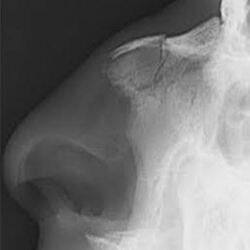
Nasal bone fractures include steps, humps, and crepitus. Ecchymosis and/or the presence of a hematoma should also be noted. Intranasal anatomy should be assessed or a septal deviation, mucosal laceration, and/or septal hematoma. Patients may need to undergo facial conventional radiography (CR).
Endoscopic debrider
A sizeable number of patients of lung cancer may develop obstruction of the central airways besides it is being increasingly diagnosed in cases effected with benign disorders such as post intubation tracheal stenosis and connective tissue diseases. This necessitates an Endoscopic palliation to relieve symptoms of dyspnea, establish a diagnosis, and facilitates other therapies such as surgical resection and reconstruction. The microdebrider is one of the tools for used here.
The microdebrider comprises of three components.
- The disposable blade is a hollow metal tube coupled to suction that cuts obstructing tissue and simultaneously removes it from the airway.
- Second, the hand piece drives the blade via an electrically powered motor and is compatible with blades of various sizes and configurations. Regular wall suction tubing connects to the hand piece to provide suction to the blade.
- The console controls the hand piece via a foot pedal and allows the operator to select the speed and the direction of rotation of the blade.
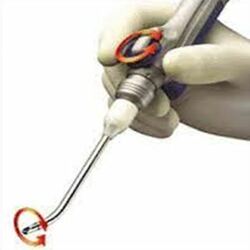
Adenoidectomy
Adenoidectomy Surgery in Bangalore
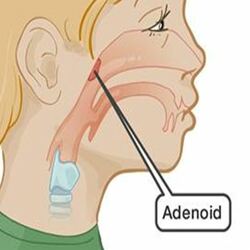
Adenoidectomy is a surgical process to remove an adenoid for reasons that include impaired breathing through the nose, chronic infections, or recurrent earaches. The effectiveness of removing the adenoids in children to improve recurrent nasal symptoms and/or nasal obstruction. The surgery is less commonly performed in adults in whom the adenoid is much smaller and less active than it is in children it is most often done under general anesthesia. Post-operative pain is generally minimal and reduced by icy or cold foods. Dr.Yashaswi has been performing adenoidectomy surgery in Bangalore for around 14 years.
AFRS
Allergic fungal rhinosinusitis (AFRS) is a type of chronic sinusitis that is caused by an allergic reaction to certain types of fungi, commonly found in the environment. It is characterized by inflammation of the sinuses, nasal polyps, and thick mucus that can block the nasal passages. AFRS typically affects individuals with a history of allergies and asthma, and symptoms may include nasal congestion, headache, facial pain, and loss of sense of smell. Diagnosis of AFRS may involve imaging tests such as CT scans and allergy testing. Treatment options may include antifungal medications, corticosteroids, and surgery to remove nasal polyps or other blockages.
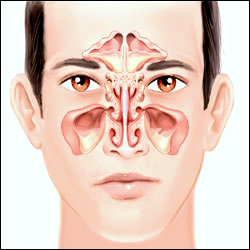
Epistaxis
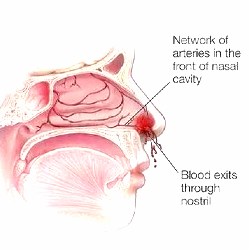
Epistaxis is bleeding from the nose. The most common causes in children is nose picking, dryness of nose, deviated nasal septam. In adults the most common cause in uncontrolled high blood pressure. Other causes include
- Sinusitis
- Nasal polyps
- Inverted papilloma and
- Sino-nasal tumours / maliqrancy